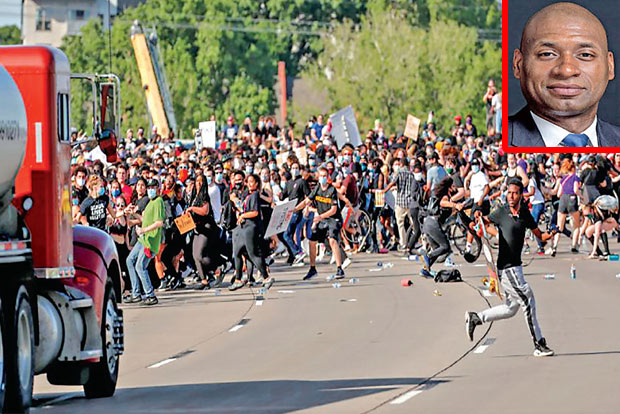The destructive power of despair
Despair has an incredible power to initiate destruction. It is exceedingly dangerous to assume that oppression and pain can be inflicted without consequence, to believe that the victim will silently absorb the injury and the wound will fade. No, the injuries compound, particularly when there is no effort to alter the system doing the wounding, no avenue by which the aggrieved can seek justice.

Chennai
This all breeds despair, simmering below the surface, a building up in need of release, to be let out, to lash out, to explode.
As protests and rioting have swept across the country in the wake of the killing of George Floyd by the police in Minneapolis, it’s evident that America has failed to learn that lesson yet again. The protests are not necessarily about Floyd’s killing in particular, but about the savagery and carnage that his death represents: The nearly unchecked ability of the state to act with impunity in the oppression of black bodies and the taking of black life.
It is an anger over feeling powerless, stalked and hunted, degraded and dehumanised. It is an anger that the scenes keep repeating themselves until one feels exhausted and wrung out. It is an anger over feeling that people in power on every level — individual officers as well as local, state and federal government — are utterly unresponsive to people’s calls for fundamental change and equal justice under the law and equal treatment by it. When people feel helpless, like there is nothing left to lose, like their lives already hang in the balance, a wild, swirling, undirected rage is a logical result. You destroy people’s prospects, they’ll destroy your property. Our intransigence on the issue of social justice and use of force by the police is making last-straw extremists of members of a generation that feels unheard and disrespected. We can bemoan the violence that has attended some of these protests, but we must also recognise that to have to live in a world, in a society, in which you feel that your very life is constantly under threat because of the colour of your skin is also a form of violence. It is a daily, ambient, gnawing violence. It is the kind that makes a grown man’s shoulder draw up and his jaws clench whenever officers approach, even when there has been no offense or infraction. It is the kind that forces mothers down to pray whenever a child is out late, pleading to the gods for his or her safe return. It is the kind that makes a child think to write a parent’s phone number on their skin when they sense trouble brewing, just in case. This is also violence.
Indeed, America is not only the progenitor of this type of violence, but it sadly responds most to violence. That’s when people pay attention, that’s when the ears perk up, that’s when the news crews come. During the Civil Rights Movement, the protesters practiced non-violence, but they were regularly met with violence, and it was that violence that spurred action. The Civil Rights Act of 1964 was passed after the violence against protesters was broadcast on TV, four little girls were killed in the bombing of Birmingham, Alabama’s 16th Street Baptist Church and the killing of Medgar Evers in 1963. The Civil Rights Act of 1968, popularly known as the Fair Housing Act, was passed after Martin Luther King was assassinated and rioting swept the country.
If America wants peace it must be responsive in peacetime. You can’t demonise an athlete who peacefully takes a knee to protest against police brutality, labelling him as President Trump did, and then pine for peaceful protests now. It seems that no form of protest has been effective in this fight for justice. It seems that what the public and the power structure want is a continuation of the status quo. They want stillness and passivity. They want obedience. They want your suffering to be silent, your trauma to be tranquil. That won’t happen. Some of the people now breaking things and burning things and looting things are ironically participating in a storied American tradition. There has long been a penchant for destruction in this country, an insatiable blood-lust, that the country conveniently likes to forget.
American violence is learned violence. It is the American way. White people in America have rioted, slaughtered, massacred and destroyed for centuries, often directing their anger and violence at black people and Native Americans, to take what they had or destroy it, to unleash their rage and assert their superiority, to instill terror, to maintain power.
Sunday marks the 99th anniversary of the Tulsa Race Massacre in which a whole prosperous black neighbourhood known as “Black Wall Street” was destroyed and as many as 300 people killed because of a violent white mob. White riots have often, historically, targeted black people, while black people have rioted to protest injustice. On either side, racism is the root. And we have refused to sufficiently address it. Now, that chicken is coming home to roost.
— The writer is an Opinion columnist with NYT© 2020, The New York Times
Visit news.dtnext.in to explore our interactive epaper!
Download the DT Next app for more exciting features!
Click here for iOS
Click here for Android



